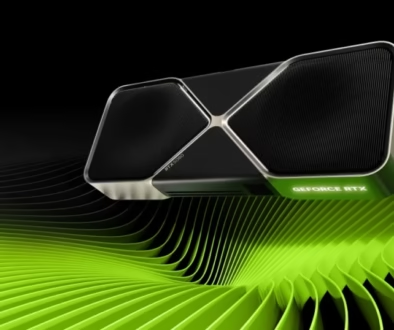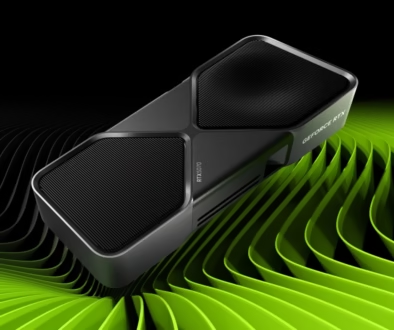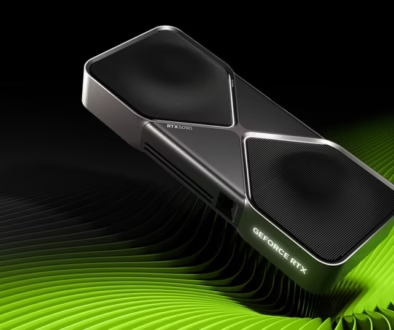Intel Arc B580 Review
When you purchase through links on our website, we may earn an affiliate commission.
Salman Graphic Cards Reviews 0
Intel Arc B580
The New Budget King.
5
Pros
- Excellent performance.
- 12GB of VRAM.
- Improved ray tracing performance.
- Competitive pricing.
Cons
- Driver development still important.
The Intel Arc B580 is a discrete graphics card designed to bring high-performance gaming to a wider audience. Featuring 12GB of GDDR6 memory, the B580 targets gamers seeking a balance of performance, features, and affordability. This card aims to disrupt the budget-to-mid-range market, offering a compelling alternative to established players. Let’s delve into what makes the Arc B580 tick and how it performs in the real world.
Hardware and Architecture
At the heart of the Arc B580 lies Intel’s Xe2 architecture. The card boasts a generous 12GB of GDDR6 memory, a substantial amount in this price segment, allowing for smoother gameplay at higher resolutions and texture settings. This memory operates across a 192-bit memory interface, ensuring ample bandwidth for data transfer. The card’s Thermal Design Power (TDP) sits around 190W, making it compatible with a wide range of PC builds with a small power supply. Detailed specifications are included in the following table:
| Specification | Intel Arc B580 | RX 6600 |
|---|---|---|
| Architecture | Xe2 | RDNA 2 |
| Foundry | TSMC | TSMC |
| Process Size | 5 nm | 7 nm |
| Transistors | 19,600 million | 11,060 million |
| Base Clock | 2670 MHz | 1626 MHz |
| Boost Clock | 2850MHz | 2491 MHz |
| Memory Size | 12 GB GDDR6 | 8 GB GDDR6 |
| Memory Bus | 192 bit | 128 bit |
| Bandwidth | 456.0 GB/s | 224.0 GB/s |
| TDP | 190 W | 132 W |
| Shading Units | 2560 | 1792 |
| RT Cores | 20 | 28 |
| Release Date | Dec 12th, 2024 | Oct 13th, 2021 |
| Launch Price | 249 USD | 329 USD |
Performance Analysis
The real test for any graphics card is how it performs against the competition. In the case of the Arc B580, the main rivals are the NVIDIA GeForce RTX 4060 and AMD Radeon RX 7600. These cards have been vying for the top spot in the budget segment, so it’s time to see if the B580 can disrupt the status quo. Let’s dive into the benchmark data and see how the B580 measures up.
The provided benchmark charts reveal key performance trends for the Arc B580. In rasterization scenarios (performance without ray tracing), the B580 demonstrates a clear advantage over some of its direct competitors. On average, it’s about 5% faster than the RTX 4060 and 7% faster than the RX 7600, making it a compelling option for gamers prioritizing traditional gaming performance.
When considering ray tracing workloads, the picture shifts. While the B580 delivers significantly better ray tracing performance compared to the RX 7600 (approximately 37% faster), it falls behind the NVIDIA offerings. It’s about 11% slower than the RX 7700 XT in ray-traced scenarios and roughly 20% slower than the RTX 4060. This indicates that while Intel has made strides in ray tracing technology, NVIDIA still holds a performance lead in this area.
However, a crucial aspect that sets the B580 apart is its 12GB of VRAM. This generous memory capacity is a significant advantage, especially at its price point. Most competing cards in this segment offer only 8GB of VRAM, which can become a bottleneck in modern games with high texture demands. The extra VRAM on the B580 can contribute to smoother gameplay and potentially better performance in future titles.
The Driver Situation
The story of Intel Arc has been intertwined with the development of its graphics drivers. Initially, driver issues were a significant concern, impacting performance and stability in many games. However, Intel has been actively addressing these issues through consistent driver updates. The driver situation has improved considerably. Performance in many games has seen substantial gains, and stability has also been enhanced. While there’s always room for further improvement, the current state of Intel’s drivers is significantly better than before, making the B580 a much more viable option.
Conclusion
The Intel Arc B580 emerges as a compelling option in the budget-conscious gaming market, potentially the card many have been waiting for. It delivers solid performance at a reasonable price, often outperforming its direct competitors, the RTX 4060 and RX 7600, in rasterization workloads. While its ray tracing performance doesn’t quite reach the levels of the RTX 4060, it significantly surpasses the RX 7600 in this area. Perhaps the most significant advantage of the B580 is its generous 12GB of VRAM. This larger memory capacity is a game-changer in this price segment, providing a degree of future-proofing for upcoming titles. Considering its competitive pricing, strong rasterization performance, improved ray tracing capabilities, and the substantial VRAM advantage, the Intel Arc B580 is poised to become the new budget king.


